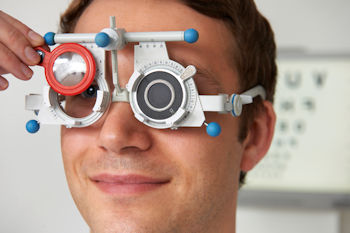Do you have diabetes? If so, do you get regular eye exams? If not, you need to come to the best eye doctors near Estero, Florida – Elmquist Eye Group. Many people who have diabetes develop an eye condition called diabetic retinopathy that threatens vision because it damages the retina of the eye.
What is diabetic retinopathy?
 Sadly, diabetic retinopathy is the leading cause of blindness in Americans under age 60. Because America has the highest rate of diabetes among nearly 40 developed nations, diabetic retinopathy is a tremendous problem. Every year, there are about 14,000 new cases of blindness stemming from diabetic retinopathy, according to data from the Centers for Disease Control and Prevention (CDC).
Sadly, diabetic retinopathy is the leading cause of blindness in Americans under age 60. Because America has the highest rate of diabetes among nearly 40 developed nations, diabetic retinopathy is a tremendous problem. Every year, there are about 14,000 new cases of blindness stemming from diabetic retinopathy, according to data from the Centers for Disease Control and Prevention (CDC).
People with diabetes generally have the condition for at least 10 years before developing retinopathy. The high blood sugar levels accumulate in the blood vessels, causing damage. Uncontrolled high amounts of sugar clog the vessels in the eye’s retina. The light-sensing cells in the retina become damaged and vision is affected because the light sensors (photoreceptors) are damaged. This damage is very apparent in the small blood vessels of the eye, and easily seen during tests done as part of our comprehensive eye exam.
When newly diagnosed with diabetes, your primary care physician should recommend that you see an eye doctor for a dilated eye exam. Don’t wait to get an exam. People most vulnerable to developing diabetic retinopathy are African Americans and the elderly, as well as individuals who may not receive appropriate eye care.
Early detection
Many of these cases of blindness could have been prevented if interventions had occurred early. In fact, early detection is key because doctors can quite often prevent diabetic retinopathy when it is detected early.
Early detection requires routine eye exams performed by an optometrist or ophthalmologist. Most patients have no symptoms early on, so they are not even aware that they have retinopathy. Another condition common in people with diabetes is diabetic macular edema (DME), which involves swelling of the macula in the eye. Diabetes can also cause the damaged blood vessels in the retina to leak blood into the back of the eye.
If you have experienced fluctuating vision, are seeing floaters, or notice spots in your vision, you may have diabetic retinopathy. Blurry or distorted vision and double vision are other signs, as is developing a shadow in your field of vision.
Know the risk
Most people do not understand that with diabetes, they are at risk for diabetic retinopathy. People simply are unaware of the risk of vision loss. In surveys conducted by the National Eye Institute, 30 percent of patients responding don’t get regular annual eye exams, the primary way to detect the condition.
Eye exams are important for everyone, and more so if you have diabetes. The best eye doctors are near Estero, Florida at Elmquist Eye Group, so give us a call today to schedule an appointment. We will look for signs of not only diabetic retinopathy, but of other diseases as well. We want to help you care for your eyes!
